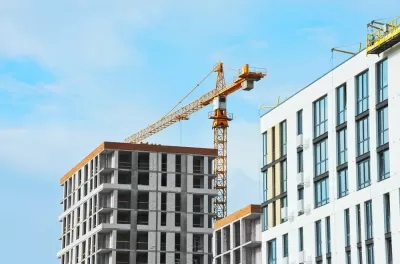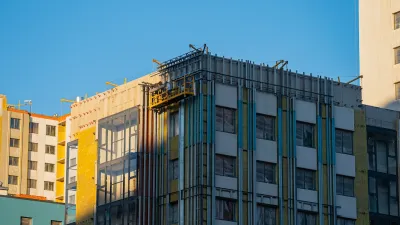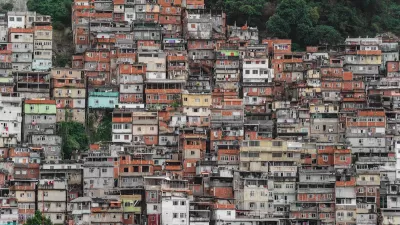A study of over a million Chicago buildings assessed their ‘embodied carbon’ footprint over their lifetimes, showing that demolishing an old building in favor of a new one almost always produced more emissions.

A study of embodied carbon — carbon emissions produced over the entire life cycle of a product — produced by buildings found that retrofitting existing buildings produces significantly lower emissions over the entire life cycle, reports Nish Amarnath in Smart Cities Dive.
As a result, demolishing an existing building to construct a new one makes little sense from an environmental perspective, even if that new building is more energy efficient, according to the research note.
According to Amarnath, understanding the total carbon impacts of a building is difficult in the United States due to a lack of a comprehensive building inventory and building-level data as well as no clear benchmarks for assessing embodied carbon.
The researchers used data from over 1 million Chicago buildings to show that “increasing the average lifespan of buildings from 50 years to 75 or 80 years and reducing building size by 20% can cut their overall carbon emissions by two-thirds.” Buildings with masonry structures and walls have the highest emissions over their life cycle, while buildings with wooden structural elements and shingled roofs have the lowest emissions.
The researchers acknowledge the challenges of retrofitting older buildings, noting that some energy efficiency upgrades can also increase the overall production of embodied carbon. “If the goal is to enhance energy efficiency and achieve long-term cost savings, upgrading the HVAC system and improving the building envelope should be prioritized.”
FULL STORY: Retrofits more effective in cutting operational, embodied carbon emissions than new builds: study

Planetizen Federal Action Tracker
A weekly monitor of how Trump’s orders and actions are impacting planners and planning in America.

Congressman Proposes Bill to Rename DC Metro “Trump Train”
The Make Autorail Great Again Act would withhold federal funding to the system until the Washington Metropolitan Area Transit Authority (WMATA), rebrands as the Washington Metropolitan Authority for Greater Access (WMAGA).

The Simple Legislative Tool Transforming Vacant Downtowns
In California, Michigan and Georgia, an easy win is bringing dollars — and delight — back to city centers.

The States Losing Rural Delivery Rooms at an Alarming Pace
In some states, as few as 9% of rural hospitals still deliver babies. As a result, rising pre-term births, no adequate pre-term care and harrowing close calls are a growing reality.

The Small South Asian Republic Going all in on EVs
Thanks to one simple policy change less than five years ago, 65% of new cars in this Himalayan country are now electric.

DC Backpedals on Bike Lane Protection, Swaps Barriers for Paint
Citing aesthetic concerns, the city is removing the concrete barriers and flexposts that once separated Arizona Avenue cyclists from motor vehicles.
Urban Design for Planners 1: Software Tools
This six-course series explores essential urban design concepts using open source software and equips planners with the tools they need to participate fully in the urban design process.
Planning for Universal Design
Learn the tools for implementing Universal Design in planning regulations.
Smith Gee Studio
City of Charlotte
City of Camden Redevelopment Agency
City of Astoria
Transportation Research & Education Center (TREC) at Portland State University
US High Speed Rail Association
City of Camden Redevelopment Agency
Municipality of Princeton (NJ)





























